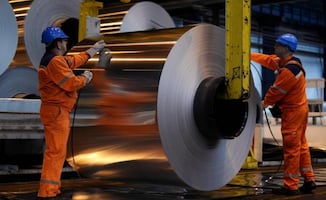Leer en español
On July 5, a small airplane suspected of carrying drugs landed on a highway in Quintana Roo and burst into flames.
A video posted by Quintana Roo authorities showed smoke billowing from the jet as it sat on a rural two-lane highway.
The Defense Ministry said the plane had arrived from South America and had been tracked since it entered the Mexican airspace.
The Mexican army deployed two air force planes to trail the jet and troops were flown to the landing site. No arrests were made.
Recommended: The 6 Mexican drug cartels fueling the US drug and opiod crisis
Further down the highway, headed toward the neighboring state of Yucatán, troops found a pickup truck loaded with 13 sacks of cocaine weighing a total of 390 kilograms. The Sedena said the cocaine seized is worth up to MXN 109,151,250.
It was unclear whether the plane made an emergency landing and burst into flames, or whether drug traffickers set if on fire as they often do.
The website Aviation Safety Network identified the plane as a decades-old BAe-125 15-seat passenger jet.
The drugs, airplane, and vehicle are being guarded by authorities, who have launched an investigation.
Drug traffickers use advanced airplanes
In February 2020, EL UNIVERSAL reported that Mexican drug cartels were using more advanced airplanes to transport drugs.
According to Armando Ruiz Ayala, the head of the operations department from the Integral Aerial Surveillance System (SIVA), Mexican drug cartels have modified the way they transport drugs by implementing the use of more advanced and faster airplanes; they went from using propeller planes to turbine airplanes.
Ruiz Ayala said that although the drug cartels haven’t stopped using small planes, they are also using Gulfstream and Learjet airplanes to transport drugs, weapons, and money from South America to Mexico, and then to the United States.
The army colonel explained that drug cartels are “modifying the way they operate, previously they used small airplanes, propeller planes, and they are currently using airplanes with turbine engines, with higher speed and greater carrying capacity.”
Nevertheless, the government official said the Mexican government has technology such as five radars and a fleet of three airplanes to detect the illegal airplanes. Moreover, the three planes can form a shield that forces pilots who work for the cartels to land in Guatemala or Belize, not Mexico: “Mexico has an aerial shield that allows the detection of any irregular flight. When they realize this, they don’t dare to enter the [Mexican airspace] because they know they will be detected and intercepted, so they land before.”
Armando Ruiz said that on average, Mexican authorities detect three irregular flights in Mexico’s southern border every month. The majority of these airplanes come from Venezuela but more flights have been registered since January 2020, as 9 of these planes were detected in that month alone. Furthermore, since President López Obrador took office, authorities have registered 630 irregular flights and in 80 cases they were illegal.
During the current administration, authorities have seized drugs, weapons, and airplanes worth around MXN 3,500 million.
The army official also revealed that authorities have identified the flight and landing paths used by criminal organizations. The most common route is Venezuela-Nicaragua-Mexico; these flights often land in Chiapas, Quintana Roo, and Tabasco using clandestine runways, illegal airfields, and alfalfa fields.
Pilots often set the airplanes on fire once they successfully transported the drugs.
Amado Carrillo Fuentes, aka “The Lord of the Skies”
Carrillo Fuentes was one of the most notorious drug traffickers of all time. He was the most powerful drug lord in Mexico in the 90s, thanks to his use of private airplanes to transport large amounts of drugs.
The kingpin gained the nickname "The Lord of the Skies" after he became the first kingpin to use private airplanes to transport cocaine.
gm
Noticias según tus intereses
[Publicidad]
[Publicidad]














